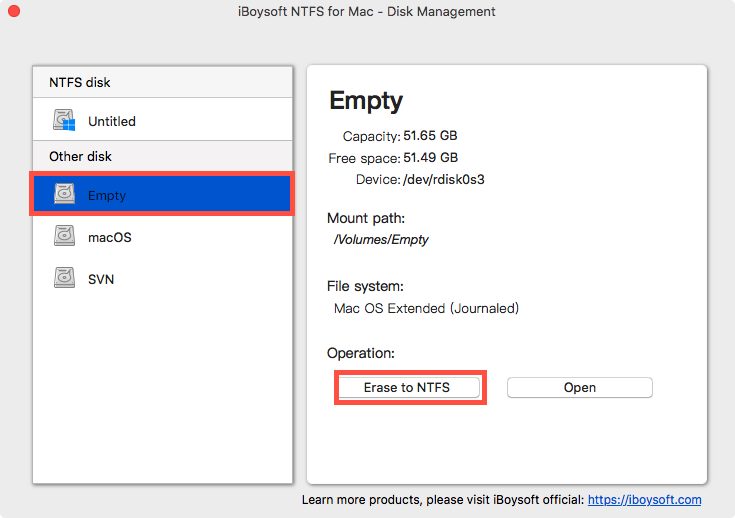
#Install ntfs on mac drivers#
if you must write to an NTFS drive, one of the paid, third-party drivers will be the best-performing, least-effort option.
#Install ntfs on mac mac os x#
Most Mac users will be better off formatting external drives with exFAT, ensuring they work well on both Windows and Mac OS X without any extra work. Delete the line you added to the file and save your changes. To undo this change later, just repeat the above process to open the /etc/fstab file in nano. It won’t pop up automatically and appear on your desktop like drives normally do. In a Finder window, you can click Go > Go to Folder and type “/Volumes” into the box to access it. (If you have multiple NTFS drives you want to write to, add a different line for each.)Ĭonnect the drive to the computer - unplug it and reconnect it if it’s already connected - and you’ll see it under the “/Volumes” directory. Press Ctrl+O to save the file after you’re done, and then press Ctrl+X to close nano. Type the following command into the terminal to open the /etc/fstab for editing in the nano text editor:Īdd the following line to nano, replacing “NAME” with the label of your NTFS drive:
#Install ntfs on mac for mac os#
Navigate to Applications > Utilities > Terminal or press Command+Space, type Terminal, and press Enter. If you are installing 'NTFS-3G for Mac OS X' on OS X 10.7 or later, read the 'fusewait' section under 'Known Issues'. This might not work properly - don’t blame us or Apple if you experience problems.įirst, be sure that your drive has a convenient single-word label. We don’t recommend the below method because it’s the least tested. You can then uninstall FUSE for OS X from its panel in the System Preferences window and re-enable System Integrity ProtectionĪpple’s Experimental NTFS-Writing Support – The Least Stable, Don’t Do This Sudo mv /sbin/mount_ntfs.original /sbin/mount_ntfs After you do, run the following commands: To undo your changes and uninstall everything, you’ll need to first disable System Integrity Protection. NTFS-write support should be functioning now. Launch a terminal in recovery mode and run the following command: With ventoy, you dont need to format the disk again and again, you just need to. Reboot your Mac and hold Command+R while it’s booting to enter recovery mode. Ventoy is an open source tool to create bootable USB drive for ISO files. Lastly, re-enable System Integrity Protection.

Sudo ln -s /usr/local/sbin/mount_ntfs /sbin/mount_ntfs Sudo mv /sbin/mount_ntfs /sbin/mount_ntfs.original

Launch a terminal from the Utilities menu in recovery mode and run the following command:įrom the Mac desktop, open a Terminal window again and run the following commands to make ntfs-3g function: It’ll boot into a special recovery mode environment. Reboot your Mac and hold Command+R while it’s booting. I installed the trial of Paragons NTFS for Mac, which lets me format the drive, but I havent. Next, you’ll need to disable System Integrity Protection. There seems to be an issue in recent versions of Windows 10 where one of the files in the installer is too large for FAT32 so (unless I want to do some off-label dark magic during install, which Id prefer to avoid) I need to burn directly to NTFS.


 0 kommentar(er)
0 kommentar(er)
